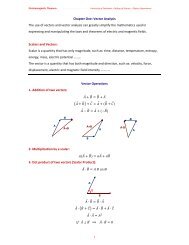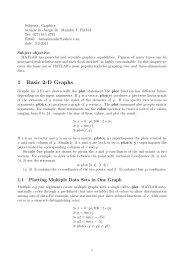Manufacture Of Brick Tiles From Local Raw Materials, N & NE Iraq.
Manufacture Of Brick Tiles From Local Raw Materials, N & NE Iraq.
Manufacture Of Brick Tiles From Local Raw Materials, N & NE Iraq.
You also want an ePaper? Increase the reach of your titles
YUMPU automatically turns print PDFs into web optimized ePapers that Google loves.
(JZS)Journal of Zankoy Sulaimani,dec, 2005, 8(1) Part A(31-45)<br />
%*&ÏögÐOÚA rÐG%& gÐGÀеÐËÑÁÊÁ@µ ÑÁ@¾â̺kÒÙÁ?iÒg@¡Ù}<br />
Table 3. The particle size distribution for<br />
the studied samples (%).<br />
Table 4. The results of Atterberg limits and Riekeindex<br />
for the studied samples<br />
S.No. 20<br />
ìm %<br />
S.<br />
No.<br />
Plasticity<br />
index<br />
Rieke<br />
Index<br />
1 60 25 15 1 10.8 10<br />
2 30 50 20 2 17.72 28.57<br />
3 28 60 12 3 14.17 9.52<br />
4 35 55 10 4 7.81 11.18<br />
5 52 43 5 5 12 15<br />
6 62 34 4 6 7.465 10.5<br />
7 32 48 20 7 25.33 10<br />
8 70 20 10 8 9.85 13.4<br />
9 49 33 18 9 8.56 5.2<br />
10 42 36 22 10 16.75 7.34<br />
11 46 33 21 11 15.24 13.67<br />
12 54 40 6 12 12.04 5.36<br />
13 37 58 5 13 6.33 6.1<br />
14 15 78 7 14 5 6<br />
In general, a Rieke index less than 10 is<br />
desirable for ceramic industries [19].<br />
Hence the samples 3, 9, 10, 12, 13 and 14<br />
may be suitable for this purpose.<br />
The results of linear shrinkage, apparent<br />
porosity, water absorption, bulk density<br />
and compressive strength are shown in<br />
tables 5, 6, 7, 8 and 9. Figures 4, 5, 6,7<br />
and 8 are illustrate the results as diagrams.<br />
The samples 1, 2, 3, 4, 6, 7, 10, 11 and 12<br />
under went linear shrinkage at<br />
temperatures 950 and 1050 °C (Fig.4).<br />
This is directly related to water of<br />
plastisity and particle size. It increases as<br />
the water of plastisity increases, and the<br />
paertricle size decrease[3, 5, 19]. The<br />
linear shrinkage values (Table 3) for<br />
samples 5 and 8 were not recorded<br />
because sample 5 broke at temperature<br />
1050 °C and sample 8 broke at<br />
temperature 950 and 1050 °C due to high<br />
content of calcium carbonate which is<br />
began to decomposed at temperature 850<br />
°C that increase the cracks and cause<br />
39

















